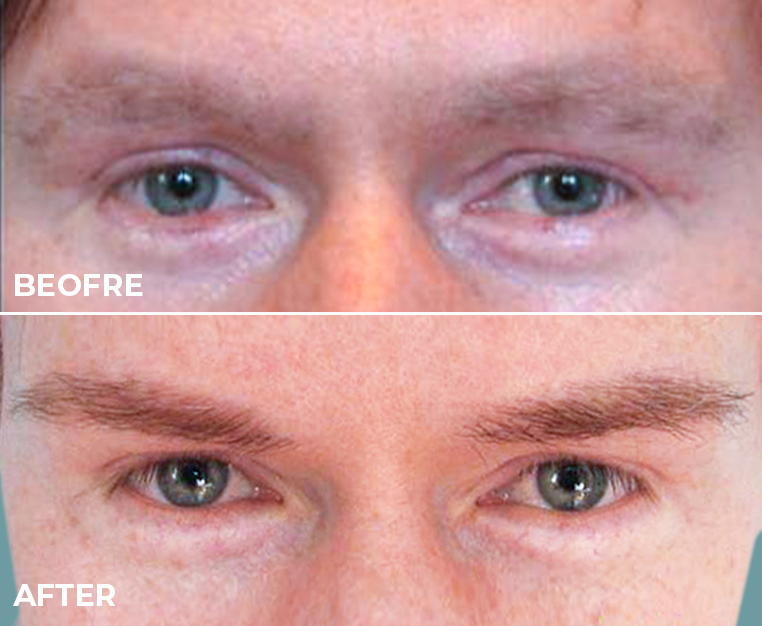The British band Culture Club are synonymous with the music from the 1980s, famous for chart-topping hits like ‘Karma Chameleon’ and ‘Do You Really Want to Hurt Me?’ These days, the lead singer and star of the band, Boy George, is making a name for himself with a new generation of fans, this time through his appearance on the UK’s reality TV show ‘I’m a Celebrity, Get Me Out of Here!’
On one episode of the show, George discussed his hair transplant with other contestants. That conversation caused a bit of a stir in the media but, as we shall see, most of the journos missed the really interesting points. Read on to find out more!
‘Fake Hair’ Myth
There were three interesting points to come out of George’s confirmation that he’d had a hair transplant. The first of these was the reaction of the media. ‘Boy George, 61, reveals NONE of his hair is real’ or variations on that theme, was the most common response of the tabloid headline writers. That description is so misleading as to be almost actionable if one understands anything at all about the hair transplant process.
The most popular type of transplant these days is the Follicular Unit Extraction (FUE) procedure. This involves transplanting hair follicles from the sides and back of the client’s head to the balding areas on the hairline and crown. Within a few months, these hair follicles produce real, natural hair just as they would have done in their original sites. To claim otherwise is to misrepresent the process.
This is not merely quibbling about semantics. People reading these headlines who know little about hair transplant surgery may be left with the belief that hair transplants produce ‘fake’ hair. That being so, why would they ever consider having a hair transplant themselves, since who wants to have weird-looking hair? This is how people’s options get shut down.
Social Media Influencers
The second interesting point to arise from George’s conversation was the revelation that he had been inspired to have a hair transplant by former England footballer Wayne Rooney. Why is this interesting? For one thing, it explodes the notion that all social media influencers are under twenty-five and to be found marketing whichever product pays the most on YouTube or TikTok. Rooney posted photos of his hair transplant on Twitter. He wasn’t selling or promoting anything, but his decision to have a hair transplant influenced Boy George to do the same. That makes Rooney a genuine social media influencer.
This redefining of what it is to be a social media influencer helps explain, in part, the rise in demand for hair transplants in recent years. The International Society of Hair Restoration Surgery (ISHRS) has published figures showing that the hair transplant market has increased by 64% from 2014 to 2021. That rise is being driven by various factors, but one of these is undoubtedly the number of celebrities – actors, musicians, athletes – having transplants and talking about it publicly. If hair restoration surgery succeeds in becoming a mainstream healthcare service, it will be thanks to the efforts of social media influencers like Wayne Rooney.
Cause of Hair Loss
The third point that the media failed to consider was why George lost his hair in the first place. Often, hair loss comes down to what’s in your gene pool. There is another possibility, however. Boy George was one of the most famous faces on the planet in the 1980s and not just because of his musical talent. He was also a fashion trailblazer, with a look that blurred the line between the genders. His long braids and hair extensions were a big part of that look.
Did his iconic hairstyle weaken and damage his hair? Possibly. Tight hairstyles like braids, ponytails and dreadlocks are notoriously bad for your strands if worn for a long time. The constant pulling and tightening can lead to traction alopecia. The damage can be reversed if caught early enough and providing the attritional hairstyle is swapped for a looser do. George, however, continued to wear his long braids well into the 1990s.
Conclusion
On the one hand, it’s a good thing when the media gives a platform to people discussing hair transplants. It normalises the whole business of hair transplantation and makes it easier for others to view it as an everyday procedure. On the other hand, using terms like ‘fake hair’ to describe the outcome of the process is not helpful.
Whether you’re someone with a high profile or just an everyday Joe Schmoe, the first rule when dealing with hair loss is to get it checked early! Vinci Hair Clinic can help with this. We offer a free, no-obligation consultation to all our new clients. The consultation can take place in person at one of our many clinics around the world or via WhatsApp using photographs. Get in touch and book your appointment today!


